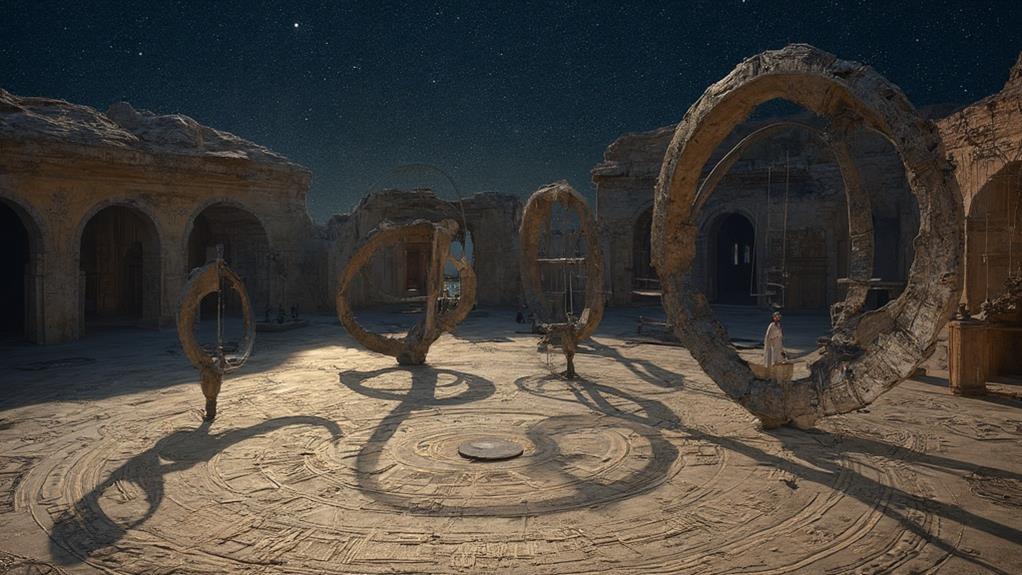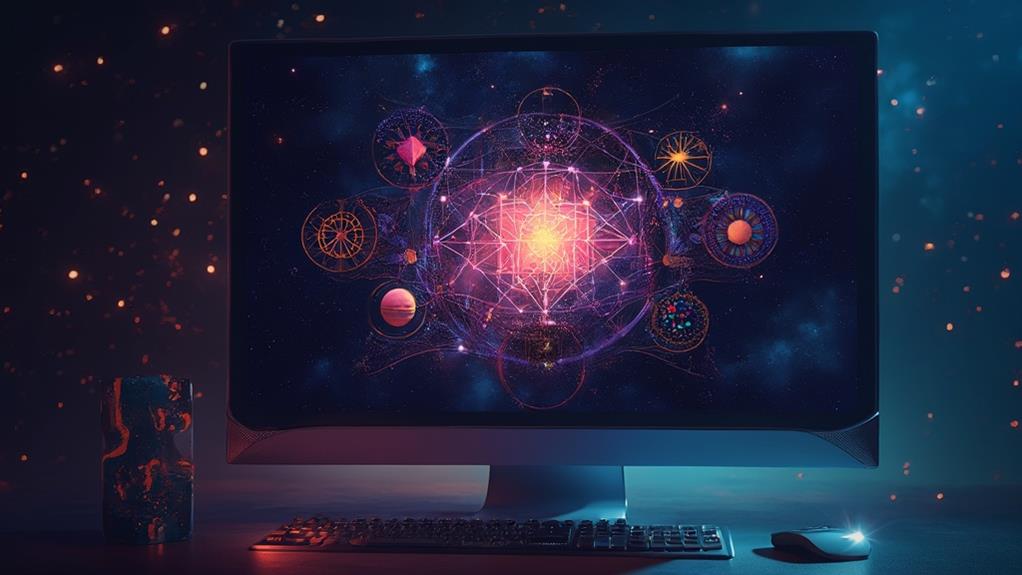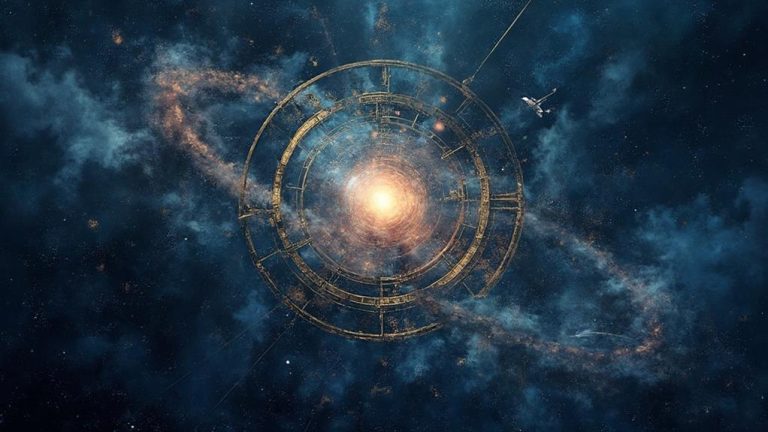Exploring the Astrological Aspects of Celestial Bodies

Astrological aspects refer to the angles formed between celestial bodies, which influence their energy flow and impact on individual lives. These angles, like the trine or square, become crucial in shaping your experiences and areas of growth.
By understanding these patterns, we can apply astrological wisdom to better navigate modern challenges and personal development.
Each planetary aspect, whether harmonious or challenging, adds unique dynamics to your birth chart, revealing profound insights about your life’s path.
The Major Planetary Aspects

Major planetary aspects are angular relationships that help astrologers read the flow of energy between planets. These major angles include:
- Conjunction (0°): When two planets are at the same degree, merging their energies completely.
- Sextile (60°): A supportive angle that brings opportunities for growth and cooperation.
- Square (90°): Indicates tension and challenge, which forces change and action.
- Trine (120°): Creates a harmonious flow that feels easy and fortunate.
- Opposition (180°): Represents a balancing act between two extremes.
The degree of separation is crucial, called “orbs.” The closer a planet is to the exact degree of an angle, the stronger the effect on your chart.
Harmonious Versus Challenging Alignments
Planetary aspects fall into two main groups: harmonious and challenging.
- Harmonious Aspects: Include sextiles (60°) and trines (120°), which allow energy to flow naturally and support progress.
- Challenging Aspects: Squares (90°) and oppositions (180°) generate tension, prompting personal growth through conflict and resolution.
Flowing Energy Between Planets
Harmonious aspects like trines and sextiles create smooth energy flows, benefiting individuals with their ease and synchronicity. For instance, a trine between Mars and Jupiter could result in greater personal drive and success.
Meanwhile, challenging aspects like squares and oppositions force us to confront difficulties, such as a Venus-Saturn opposition presenting a struggle between pleasure and discipline in relationships or personal priorities.
Tension and Growth Patterns
Harmonious aspects nurture effortless progress, while challenging aspects spark necessary tension. This tension often leads to breakthroughs, as obstacles become catalysts for transformation.
Squares, for example, may provoke internal conflict, while oppositions could manifest as external challenges, requiring balance and collaboration.
Aspect Orbs and Their Importance

“Orbs” are the allowable degree deviations from a perfect aspect, and they determine the aspect’s influence on an astrological chart.
- Personal Planets (e.g., Sun, Moon): 8-10 degrees of allowable deviation.
- Outer Planets (e.g., Uranus, Pluto): 6-8 degrees of deviation.
The closer the planets are to an exact aspect, the more potent their interaction. Orbs also distinguish between applying (coming closer) and separating aspects (moving apart), with applying aspects being stronger.
Transiting Aspects in Natal Charts
Transiting aspects occur when current planetary movements form aspects to planets in your natal chart. These momentary connections activate certain areas of your life during key periods.
Outer planets, like Saturn or Uranus, often trigger long-lasting effects when forming aspects to your natal planets, signaling substantial life changes or growth opportunities.
Moving Planets and Fate
Planetary transits can influence specific life events. For example, a Jupiter trine might bring personal opportunities, while a Saturn square can introduce hardship, inspiring discipline and perseverance.
Understanding these movements allows for better life-planning and anticipating possible challenges.
Time-Sensitive Chart Connections
Transits are most impactful at exact degrees, known as “hits.” The faster planets, like Mercury, prompt quick changes, while slower ones, like Pluto, represent more transformative long-term effects.
Tracking these connections helps you align your actions with optimal times for career moves, relationship developments, or personal decisions.
Personal Growth Through Transits
Astrological transits signal phases of development. For instance, Saturn’s 7-year cycle brings maturity, and Uranus’ transits inspire breakthrough ideas and personal revolutions every 7 years.
Tracking Pluto transits can reveal deep transformational phases in your life, helping you prepare for significant internal shifts.
Historical Origins of Aspect Theory

Aspect theory has roots in ancient Babylonian astronomy dating back to around 1800 BCE. Babylonians observed key angles between celestial bodies, founding the understanding of conjunctions and oppositions.
The Greeks later refined this with Ptolemy’s major aspects based on divisions of the circle, and during the Medieval period, Arab astronomers added minor aspects, laying the foundation of modern astrological calculations.
This historical context showcases astrology as a blend of celestial observations and mathematical analysis.
Interpreting Complex Aspect Patterns
In some charts, planets form intricate geometric configurations like the T-square, Grand Cross, or Yod. These patterns intensify the aspect relationships and provide deeper understanding of chart dynamics.
- T-Square: Involves two planets in opposition and a third squaring both, creating tension that encourages adaptation.
- Grand Cross: Four planets form a square and two oppositions, signaling challenges that require balance and resilience.
- Grand Trine: Three planets form trines, leading to natural harmony and talents across compatible elements.
- Yod: Often known as the “Finger of God,” this pattern indicates a focal point for transformation.
Modern Tools for Aspect Analysis

Technology has revolutionized astrological analysis, enabling the calculation of planetary positions and aspects in real time using astrological software.
Such programs give users access to dynamic transit tracking, progression modeling, and custom aspect settings. AI and cloud-based tools also identify geometric patterns, analyze harmonic aspects, and facilitate collaboration between astrologers.
Frequently Asked Questions
Can Aspect Patterns in Synastry Predict the Success of Romantic Relationships?
No, aspect patterns in synastry cannot concretely predict romantic success. Compatibility encompasses emotional, psychological, and social factors beyond astrological aspects.
While astrology can offer insight into potential dynamics, sustaining a relationship requires mutual understanding, empathy, and communication.
How Do Eclipses Affect the Interpretation of Planetary Aspects?
Eclipses intensify the energy of planetary aspects, often bringing swift and powerful changes, particularly when light bodies such as the sun and moon are involved.
The heightened gravitational forces during an eclipse overamplify energy; aspects formed during these periods can have profound, lasting effects.
Do Planetary Aspects Influence World Events and Collective Consciousness?
There is no scientific evidence linking planetary aspects to societal events or collective consciousness. While traditionally astrologers have attributed certain global patterns to celestial alignments, research has yet to support such claims.
Are Retrograde Planets Interpreted Differently When Forming Aspects?
Yes, retrograde planets suggest delays or internalized issues when forming aspects. Retrograde motion causes the planet’s energy to turn inward, likely prompting reflection and reassessment of certain life areas.
What Role Do Fixed Stars Play in Planetary Aspect Interpretations?
Fixed stars add distinct energies to planetary aspects, potentially enhancing or transforming the influences. When a planet aligns closely with a fixed star, their combined energies can lead to unique astrological outcomes depending on the star’s properties.
Conclusion
Planetary aspects, which measure the angles between celestial bodies, fundamentally influence astrology. Planetary aspects, which measure the angles between celestial bodies, fundamentally influence astrology. These angular relationships are believed to shape the energy dynamics and interactions between planets, offering insight into personality traits, behaviors, and life events. By examining celestial body aspects in astrology, practitioners can decode the harmonious or challenging influences at play, providing guidance for navigating personal and cosmic cycles.
Whether through harmonious connections or challenging tensions, they reveal the energetic dynamics affecting our lives. By mastering both modern tools and ancient wisdom, you can gain deeper insight into your astrological chart and life’s potential trajectories.







